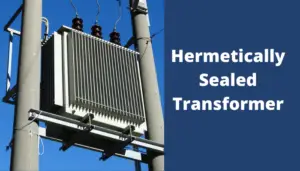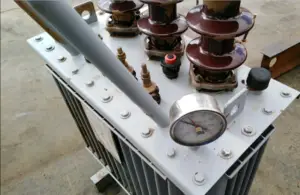Electrical transformers and motors are important components in many industries, including power generation, transportation, and manufacturing.
Overheating of these devices can lead to serious problems, including equipment failure and even fire.
Therefore, it’s important to take steps to prevent overheating and recognize the warning signs that it’s occurring.
In this article, we’ll explore some of the most effective ways to prevent electrical transformer and motor overheating, and we’ll discuss the warning signs you should look out for.
Understanding Electrical Transformer and Motor Overheating Before we dive into the preventative measures and warning signs of overheating, it’s important to understand what causes it.
The primary cause of transformer and motor overheating is excessive current flowing through the device.
This can happen when the device is overloaded, when there is a fault in the electrical system, or when the device is not properly maintained.
Overheating can also occur when the ambient temperature is too high or when there is poor ventilation around the device.
Table of Contents
main reasons that cause transformer and motor overheating:
- Excessive current flowing through the device
- Overloading
- Faults in the electrical system
- High ambient temperature
- Poor ventilation around the device
- Lack of maintenance and inspection
Preventing Electrical Transformer and Motor Overheating
Preventing Electrical Transformer and Motor Overheating There are several steps you can take to prevent transformer and motor overheating. Here are some of the most effective ones:
- Proper Maintenance: Regular maintenance is critical for ensuring the proper operation of transformers and motors. This includes cleaning the device, checking for loose connections, and inspecting the insulation. It’s also important to test the device periodically to ensure that it’s functioning correctly.
- Overload Protection: To prevent transformer and motor overheating due to overloading, you can install overload protection devices. These devices are designed to detect excessive current and shut off the power supply to the device.
- Proper Ventilation: Good ventilation is essential for preventing transformer and motor overheating. Make sure that the device is installed in a well-ventilated area and that there is enough space around it to allow for proper airflow.
- Temperature Monitoring: Installing temperature monitoring devices can help you detect when a transformer or motor is overheating. These devices can be set to trigger an alarm when the temperature rises above a certain threshold, alerting you to the problem before it becomes more serious.
Warning Signs of Electrical Transformer and Motor Overheating
Warning Signs of Electrical Transformer and Motor Overheating In addition to taking preventative measures, it’s also important to recognize the warning signs that a transformer or motor is overheating. Here are some of the most common warning signs:
- Unusual Noises: If you hear unusual noises coming from a transformer or motor, it could be a sign that it’s overheating. These noises can include buzzing, humming, or grinding sounds.
- Hot to the Touch: If a transformer or motor feels hot to the touch, it could be a sign that it’s overheating. Be careful not to touch the device if you suspect it’s overheating, as it could be dangerous.
- Burning Smell: A burning smell is a clear indication that something is wrong with a transformer or motor. This could be a sign that it’s overheating and could lead to a fire. I highly recommend reading my comprehensive article about Transformer Burn out reasons and solutions.
- Tripped Circuit Breakers: If the circuit breaker for a transformer or motor keeps tripping, it could be a sign that the device is overheating. This is a safety feature designed to prevent damage to the electrical system, but it could also indicate a problem with the device. I ‘ve written a detailed article about Why CB keeps Tripping, Read it now for more information about causes and solutions.
Conclusion
Transformer and motor overheating can lead to serious problems, including equipment failure and fire.
However, by taking preventative measures like proper maintenance, overload protection, and proper ventilation, and by recognizing warning signs like unusual noises, hot surfaces, burning smells, and tripped circuit breakers, you can prevent overheating and ensure the safe and reliable operation of these critical components.
Remember to always prioritize safety when dealing with electrical devices, and don’t hesitate to seek professional help if you suspect a problem with a transformer or motor.
Install my Free Android App on Google Play:
Electrical Cables Most Common Tables
And, my Electrical Calculations App “”
Discover more great content by subscribing to My channel
Looking to stay ahead of the game in the world of electrical engineering? Subscribe to my YouTube channel and gain access to exclusive content you won’t find anywhere else!
The staff I recommend
(Amazon Affiliate Links to products I believe are high quality):
- Economy 120 Volt/60Hz AC Power Source – Step-Down Voltage & Frequency Converters 1800W
- UNI-T Digital Multimeter Tester UT139C
- 50-Amp Extension Cord for RV “100ft”
- Voltage Stabilizer 110/220v
- Hair Dryer “best selling“
- TOSHIBA EM131A5C-BS Countertop Microwave Ovens
Disclaimer: This contains affiliate links to Amazon products. I may earn a commission for purchases made through these links.





